Getting ready for Spring!

Getting ready for Spring!

From the Chicago Tribune
The State Department on Wednesday introduced shades of gray into its system that tells people about trouble spots around the globe.
The standard jargon at the State Department’s website (travel.state.gov) used to be a “warning” — something serious that would suggest extra caution (and sometimes more) — or an “alert,” which often was a red flag, sometimes temporary, telling travelers about, say, an election or the aftermath of a natural disaster.
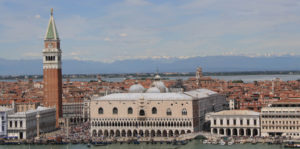
The revised system assigns levels of advice (1 to 4) about travel as it pertains to every country.
None of levels prohibits travel. North Korea is the only country that’s off-limits to Americans without special permission.
Five states in Mexico have gotten the sternest “do not travel” advisories under the revamped system.
The five include the northern border state of Tamaulipas and the Pacific coast states of Sinaloa, Colima, Michoacan and Guerrero.
The State Department had previously discouraged travel to all or part of the five states’ territories but the new warnings are sterner, placing the drug- and crime-plagued states on the same level warning level as Somalia, Yemen, Syria or Afghanistan.
Mexico as a whole has a level-two rating, “exercise increased caution” in the new four-level alert system, because of concerns about crime. But an additional 11 Mexican states got a level-three warning, “reconsider travel.” Mexico has 31 states, half of which are under level 3 or 4 warnings.
The State Department also appears to have softened its stance on Cuba, advising people to “reconsider” travel to the Caribbean island nation under the new system.
Last September, it issued a warning that told Americans to avoid travel to Cuba in the wake of health problems reported by Havana-based U.S. diplomats and their family members. The U.S. government evacuated most employees at its embassy in the Cuban capital.
The department issued this fact sheet about the changes on Wednesday:
On January 10, 2018, the Department of State launched improvements to how we share information with U.S. travelers. These improvements will provide U.S. citizens with clear, timely, and reliable safety and security information worldwide. Under the new system, every country will have a Travel Advisory, providing levels of advice ranging from 1 to 4:
The Travel Advisories for each country replace previous Travel Warnings and Travel Alerts. While we will issue an overall Travel Advisory level for every country, levels of advice may vary for specific locations or areas within a country. For instance, we may advise U.S. citizens to “Exercise Increased Caution” (Level 2) in a country, but to “Reconsider Travel” (Level 3) to a particular area within the country.
Our detailed Travel Advisories will also will provide clear reasons for the level assigned, using established risk indicators, and offer specific advice to U.S. citizens who choose to travel there:
We will review and update each Travel Advisory as needed, based on changes to security and safety information. Additionally, U.S. embassies and consulates will now issue Alerts to replace the current Emergency Messages and Security Messages. Alerts will inform U.S. citizens of specific safety and security concerns in a country, such as demonstrations, crime trends, and weather events.
The Department’s newly-redesigned hub for traveler information, travel.state.gov, will host all Travel Advisories, recent Alerts issued for each country, and an interactive map in mobile-friendly formats. Country pages on the site will continue to include all travel information currently available, including details about entry/exit requirements, local laws and customs, health conditions, transportation, and other relevant topics.
To receive security and other important updates while traveling, U.S. citizens can enroll their travel plans in the Smart Traveler Enrollment Program (step.state.gov), and follow us on Twitter (@travelgov) and Facebook (facebook.com/travelgov).
This article was originally published in the Chicago Tribune. In our crazy world, there are many warnings about travel. If you’re going to travel, it’s best to be informed about your destination. This is not cause for alarm…just information.
As always…travel safe and pay attention. It really doesn’t matter if you traveling to a far away destination or a local one.
The Department of State has launched new Travel Advisories and Alerts to make it easier for U.S. citizens to access clear, timely, and reliable safety and security information about every country in the world. For more details and FAQs about our Travel Advisories and Alerts, please see travel.state.gov/travelsafely. You are receiving this because you are enrolled in our Smart Traveler Enrollment Program (STEP). You do not need to take further action to continue receiving these updates. Before any travel abroad, we encourage you to check our safety and security information for your destination at travel.state.gov/destination.
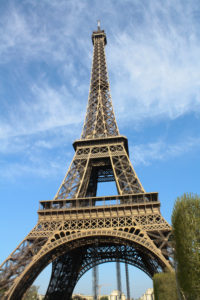
France, Level 2: Exercise increased caution
Exercise increased caution in France due to terrorism.
Terrorist groups continue plotting possible attacks in France. Terrorists may attack with little or no warning, targeting tourist locations, transportation hubs, markets/shopping malls, local government facilities, hotels, clubs, restaurants, places of worship, parks, major sporting and cultural events, educational institutions, airports, and other public areas.
Read the Safety and Security section on the country information page.
If you decide to travel to France:
Bottom line…pay attention to warnings and pay attention when you travel, regardless of where you’re going.
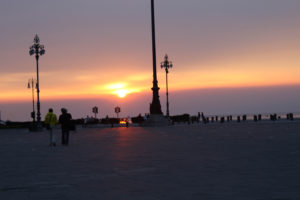
Podere Selva Capuzza
Buongiorno dal podere Selva Capuzza!
We are proud to announce that our hundred’s harvest wines are about to leave the cellar in the next weeks.
The “Chiaretto San Donino” is already available, while “Lugana San Vigilio” will debut in february.
“Groppello San Biagio” and San Martino della Battaglia “Campo del Soglio” will be ready between springtime and summer.
“Lugana Selva” will be introduced between june and september, at the correct aging time.
Regarding ” Dunant 2017″ , the aging time is around one year, while “Mader” should be ready in 2020, just like “Lugana Riserva Menasasso”.
Between 2018 and 2020 we will celebrate our hundred’s harvest with a surprise, a new unrealeased wine among the Selva Capuzza bottles.
The 2017 harvest was marked by a warm and dry summer, with a considerable flow of air thanks to the position of the vineyards on the famous “cap” (Cappuccio) which gives the name to our Selva.
The ripening of the grapes was healthy and independent, with few human interference in the vineyard as we had very little parassite issues.
Luck was on our side, leaving us aside the metereological problems that hit the area and some of our collegues; the production has been reduced only due to the high temperatures.
The quality of these wines make us proud and glad: the white wines will have again our preferred alcoholic percentage, not over 13%, they will be fresh and crispy, with a perfect balance of nose and mouth. “Chiaretto”
astonished us with its elegance and body, and last but not least, with its beautiful colour.
It is too early to judge the red wines, as soon as “Groppello” will be ready, we will understand the personality they may express this year.
Our hundred’s harvest is among the best of the last twenty years, we are happy to celebrate it with you.
Kind regards
Laura Pacchioni

Following the success of the major temporary exhibition Bistro! From Baudelaire to Picasso in 2017, La Cité du Vin will be presenting Wine and Music, harmony and dissonance (16th – 19thcentury) from 23 March to 24 June 2018.
The exhibition will include 150 works (paintings and pottery, music books, models, instruments, stage jewellery, etc.) from regional, national and European collections, as well as a selection of musical works (operas, ballets, drinking songs) illustrating the association between wine and music, based on themes ranging from the mythical to the profane, epicurean to moralistic. This original exhibition will be accompanied by a wide and eclectic cultural programme.
——————-
A broad range of themes :
During the Renaissance period and the late 19th century there were numerous representations of wine and music, with inspiration taken from Antiquity. Such evocations appeared in new forms in every social category, whether princely, bourgeois or common.
The exhibition pays tribute to this diversity and is based on six themes (Dionysus, wine and music – Dance, bacchanal, ballet and the open-air ball – Love and intoxication – Figures and allegories – Home concerts and gracious tables – Banquets, taverns and cabarets).
The exhibition brings together all musical forms and artistic mediums, from court ballets to opera, from drinking songs to dance tunes, from paintings to tableware and popular imagery.
At the beginning of each section, an old work evokes the historical depth of the subject and the reference to ancient myths. Dionysus, followed by Bacchus, incarnated intoxication, sensual pleasures, fertility and creativity. The allegory of music is often associated with love, sensuality and wine.
The tour is accompanied by a soundtrack.
Eight individual listening points and three communal listening cabinets play excerpts from musical works (ballets by Lully, Rameau, Massenet, Duvernoy, etc.), videos of great operatic arias (Puccini, Verdi) and unique recordings of drinking songs.
The scientific committee with Florence Gétreau
The curator of the exhibition is Florence Gétreau, Director Emeritus of Research at the CNRS, Institute for Research in Musicology. Florence Gétreau is an art and musicology historian, working as Heritage Curator until 2004 (Museum of Music, Museum of Popular Arts and Traditions) and has directed two research teams at the CNRS.
An accessible exhibition, open to all
The layout and choice of works presented are suitable for all audiences. The explanatory texts are presented in different parts (by theme, group of works or major works), helping visitors in their discovery of the different sections. Some collections of sketches,
manuscripts and other written collections are presented on digital displays for visitors to browse.
A special tour has been designed for young people. Through an accompanying booklet and a selection of key exhibits, they will discover the history of instruments and musical genres, and the variety to be found in sets, costumes and stage jewellery.
Original scenography
The scenography was designed by architect-scenographer Loretta Gaïtis, who has also created projects for the Musée d’Orsay, Grand Palais and the Bibliothèque Nationale de France.
The exhibition progresses through an atmosphere of warm colours, structured by breaks and musical interludes. Extracts from sheet music, books and etchings provide the backdrop for the scenography. Different perspectives and transparencies gradually reveal the items on display, showcased behind glass using light effects. Three musical cabinets blend naturally into the exhibition, inviting visitors to immerse themselves in the sounds of both familiar or original works.
Events during the exhibition period
La Cité du Vin is also offering an eclectic cultural programme in connection with the exhibition (the full cultural programme can be viewed at: laciteduvin.com) with conferences, symposiums, concerts, “Culinary cinema” screenings, workshops, guided tours and tastings etc. A small stage for musical performances has been included in the exhibition space.
An exhibition catalogue will be published by Éditions Gallimard.
This exhibition is brought to you with the support of the Bibliothèque nationale de France.
This exhibition is brought to you with the support of thecultural season Patrons of La Cité du Vin:
With the support of La Maison de Champagne Krug.
In partnership with France Musique, live from La Cité du Vin on 23 and 24 March 2018, and Le Figaro.
Practical information
The exhibition Wine and Music, harmony and dissonance – 23 March – 24 June 2018
The exhibition press kit and related cultural programme is available upon request. Visuals and acknowledgements may be sent upon request.
++++++++++++++++++
Support the cultural seasons at La Cité du Vin with the Fondation pour la culture et les civilisations du vin:
Individuals and companies can support La Cité du Vin’s cultural events. Thanks to donations from Patrons and Friends, the Fondation pour la culture et les civilisations du vin, an officially recognised non-profit organisation, provides a rich and varied cultural programme all year round at La Cité du Vin, informing and enlightening as many people as possible about the millennial culture of wine and helping to protect this intangible and universal heritage.
=> As a company – by joining the Patrons of the cultural season from €5,000/year.
=> As an individual – with the ‘Friend’s Card’ (for a donation of €250/year), or the ‘Benefactor’s Card’ (for a donation of €1,000/year).
=> As an international donor – by joining the American Friends or International Friends of La Cité du Vin.
About La Cité du Vin:
La Cité du Vin is a unique cultural facility located in Bordeaux, dedicated to wine as a cultural, universal and living heritage. It offers a spectacular journey around the world, through the ages and in all cultures. Visitors can purchase tickets at www.laciteduvin.com and at La Cité du Vin.
A new survey reveals the most popular airports on Instagram.

Do you have a favorite? Is it because it’s close to you? Or, does it have something special? Maybe it has a terrific food scene or the best art.
Check out these that made the Instagram list. Agree…or disagree?
Los Angeles (LAX) may not be your favorite if you don’t like busy airports. But, with its great restaurants and entertainment…there’s a lot of photo ops.
Chicago O’Hare is number two on Instagram’s list. Have you ever had time to check out the impressive art collection? Or, were you too busy trying to catch your next flight?
San Francisco is considerably smaller than LAX and O’Hare, but is the major airport for the Bay Area and Silicon Valley. As expected, great food can be found here. Also check out the flight history museum.
Dallas/Fort Worth has an on-site pet hotel. Hmmm.
Miami…with it’s Miami style and great art exhibits, it’s an Instagram worthy placed.
So many of my favorites are missing from this list.
I love flying in over the entire downtown of San Diego, the simple yet stunning landscape surrounding Santa Barbara, the mountains in the background of Denver, and so many more. To me, they each have their Instagram shots.
What are some of your favorites?
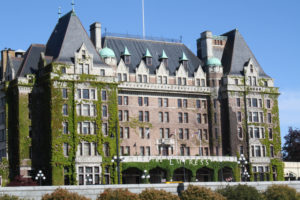
Traveling with checked bags?
Preventing, or at least lessening the chance, of losing your luggage may involve a few preventive steps. This won’t guarantee your luggage arrives with you. But, it might increase the chances.
When you book your flight, think about the time of your layover. Chances are if it’s a short one, your bag might not make it onto the next leg of your journey. This is especially true if you are flying internationally. It would be a good idea to ask about time in between flights, before you book that amazing flight deal.
Think about putting some type of marker on your bag…especially if it is a medium sized, black bag. I mean…how many of those do you see on the baggage carousel? It’s easy to wrap a piece of red tape around the handle.
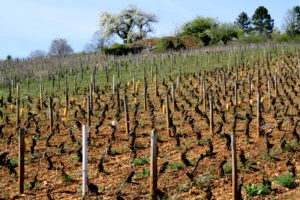
What’s your luggage tag look like? If you don’t have one and opt to use the paper ones provided by the check-in counter, the chances of it getting ripped off somewhere along the line are good. Instead, use one with a code or microchip so you can track your bag. At the very least, get one that doesn’t come off easily.
When packing, place a copy of your itinerary inside. Put it on top so if the airline has to open your bag to re-route it, it’s right there in front of them.
While you’re at it, take some photos of your bag. Use your phone and take a couple of the outside, the inside, and anything of value.
Check in early enough. Give the check-in desk and the baggage handlers enough time to get your bag on your flight.
Of course, you could always ship your bags and not worry about them. This might be best, and cheaper, if you need to have oversized or overweight bags.
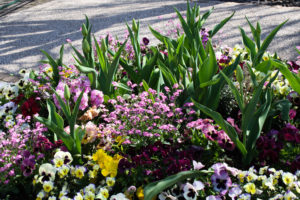
Standing in line for security at the airport can be stressful. Right?
Unless you’re TSA Pre-Check, you should know what you need to do and what to have ready for the TSA Agents. Right?
Be prepared ahead of time not only helps you, it also helps the people behind you. Take out your necessary documents…boarding pass and identification well ahead of standing in front of the agent. If you always keep them in the same spot…you’ll know exactly where to find them.
Is your boarding pass on your phone? While you’re waiting for your turn with TSA, make sure your phone’s brightness is turned all the way up and that your screen rotation is off.
If you’re traveling with a laptop, it needs to be in its own bin. Other things can go together in a bin.
Remove your shoes, belt, and anything else metal.
If this is done ahead of time…your trip through security should go smoother.
Or…sign up for TSA Pre-Check…

Okay…you read all the brochures about the pristine, white sand beaches, looked at pictures of how romantic it is at the top of the Eiffel Tower, and have always wanted to see the Mona Lisa up close.
If this is what you’re striving for on your vacation…be prepared to do a little work before you go. Why? Advance planning goes a long way if you are joining a bunch of other vacationers who want the same thing as you.
I’m not advocating planning, planning, planning. But, there are certain times and events where planning gives you a better vacation.
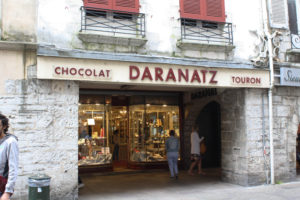
Buy those Eiffel Tower tickets at home, print them if you can, and avoid the long wait lines at the base. And, I do mean long wait lines. Same goes for museums in Florence, Venice, and other popular places. Check the Internet for the specific site to see if advanced tickets are available. Many cities have ‘museum passes’ which are good for a series of days. Investigate to see if these will save you time and money. We buy our Paris ones at the kiosk at the airport when we arrive.
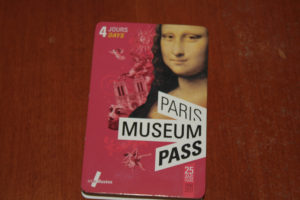
If you’re going to see the Mona Lisa at the Louvre…go early. Go when they open. Once inside, go directly to see her. I know there are other great pieces of art on your way there. But, see her first and then see the rest. You’ll be glad you did.
Maybe you’ve always wanted to learn how to make pasta, or wondered why chocolate from Bayonne tastes so good, or wanted to visit with a winemaker in Saint Emilion. Here’s where advance planning is a must. Set up your classes or appointments ahead of time.
Having given you some ideas where planning is a good idea, I have another suggestion.
Be spontaneous. Don’t plan every moment. Sometimes these unplanned days are the best days of the vacation.
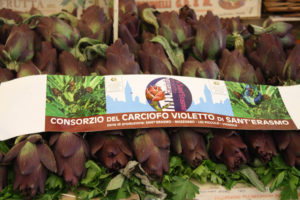
When I first read an article about bad travel habits, several things came to mind. Some made sense, and some aren’t really bad habits…just not the best way to travel.
What do you think?
Not Learning the Exchange Rate Before You Go:
Not necessarily a bad thing, but if you have an idea of the exchange rate, you won’t spend all your time figuring out what the costs are. Even better, get a currency exchange app for your phone. Problem solved.
Overbooking Your Vacation:
This seems like a problem to me. You’re never going to see it all, so why make yourself miserable by failing to get in everything?

Not Splurging When You Should:
Everybody has things they hate to spend money on. Think about this ahead of time and give yourself a budget or an item to splurge on. Then you won’t have to worry about it.
Booking at the Last Minute:
Sometimes this can’t be helped. Sometimes it bites you. Plan ahead.
Packing Issues:
Do you procrastinate and pack at the last minute? Does that cause you to pack too much or too little? Make a list and set aside a time to pack.
Not Learning Some Basic Words:
At the very least, learn Please and Thank You. Toss in Good Morning or Good Night. Put an app on your phone.